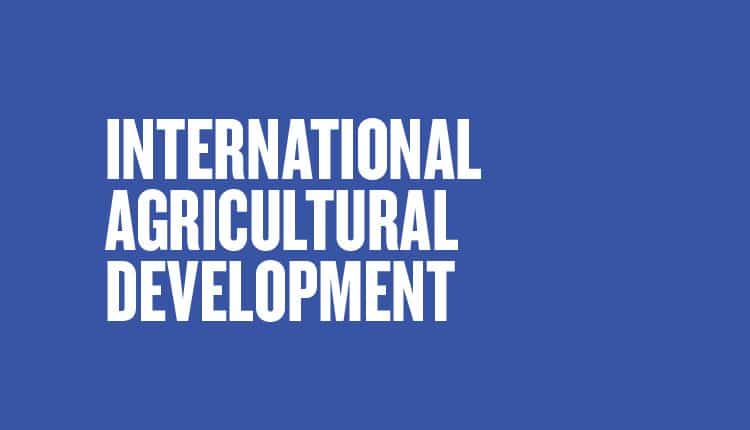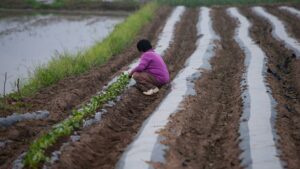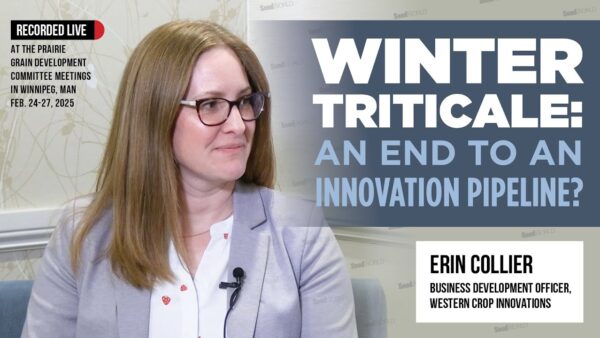Nestled up in the northwest corner of Ghana, is an entrepreneurial group of female farmers keen on gaining skills, generating revenue and reputations as Quality Seed producers. Several kilometers away, other women farmers watch over their commercial soybean fields and tout the value of Quality Seed. Stella, proudly but demurely, serves as the spokeswoman for the community of Quality Seed producers.
Quality Seed is a designation prevalent across Africa. It’s sometimes recognized officially, and recognized unofficially at other times.
Gazing across a blossoming soybean seed field, Stella shared her story with other Quality Seed producers. Her enthusiasm was contagious, as evidenced by the smiles and vigorous head nods of fellow seedsmen.
These Quality Seed producers and farmers are the beneficiaries of the Greater Rural Opportunities for Women (GROW) project administered by the Mennonite Economic Development Association (MEDA) and funded by Global Affairs of Canada. Slightly more than 1,000 groups of women in 275 communities are served by the project. Promotion of commercial soybean grain production is used by MEDA to diversify agricultural production. Generating farmer awareness, acceptance and reliance upon Quality Seed is one identified means to that end.
In a discussion, Stella shares key obstacles that seed-related development programs must overcome to scale-up. Otherwise, sustainability may remain elusive. If they don’t get it right, farmers may find themselves more disadvantaged than from the onset.
Under MEDA’s tutelage, Quality Seed producers grow and supply soybean seed to women farmers. The seed has performed well, as evidenced by high grain yields. Household nutrition levels have been enhanced by inclusion of soy in family diets, and commercial grain sales have generated cash revenues.
When asked what constitutes high-quality seed, Stella explained that she begins with the full amount of seeds produced. Then she just “takes away” the “bad” seed. Probing further to learn what Stella eliminates, she cited seed having broken noses (damaged hila); those with purple color; any that are split or cracked; and the moldy ones. By process of elimination, her remaining seed is “good seed” and is conferred with the Quality Seed designation.
Surprisingly, neither Stella nor the women farmers identified germination as a concern. Neither performed germination tests. Yet, incidence of poor germination is well documented in the region and often attributed to improper post-harvest seed handling and storage.
Stella’s seed fields are harvested by hand. Mechanical threshing is simply not economically feasible. So, hand harvested plants are threshed in the traditional manner. Plants are piled on the ground and beat vigorously with sticks until most soybeans get knocked from the pods.
When asked how she monitors fields to verify parental and commercial seed varietal identity and purity, she didn’t understand. Her reply was: “The field was planted with project-provided seed [one variety] so, how could harvested beans not be the right seed?” Phenotypical comparison of plants and seeds against varietal descriptions was a new concept.
Increased Expectations
As Stella’s farmers begin to value high-quality seed, it is likely they will also want more than a single variety. As the commercial sector develops, farmers will want their seed suppliers to provide expanded product portfolios, proof of adaptation and performance.
Parent seed of each variety must be well managed and appropriately replenished. Varietal purity of each variety must be maintained during typical multiyear research determinations. Varietal and physical purity of each variety must be assured throughout multiplication, conditioning, storage and distribution to farmers.
Physical removal of the “bad” seed alone will soon no longer be enough to satisfy farmers. Their expectations will become more demanding. Farmers will require more and better choices, larger quantities, greater value proposals and increased levels of service.
Can development activities be orchestrated to provide seed products that will meet increasing demand on a reoccurring and reliable basis? Can they be performed with a level of efficiency so that farmer needs are well-served and profits are at sufficient levels to drive the seed business forward?













